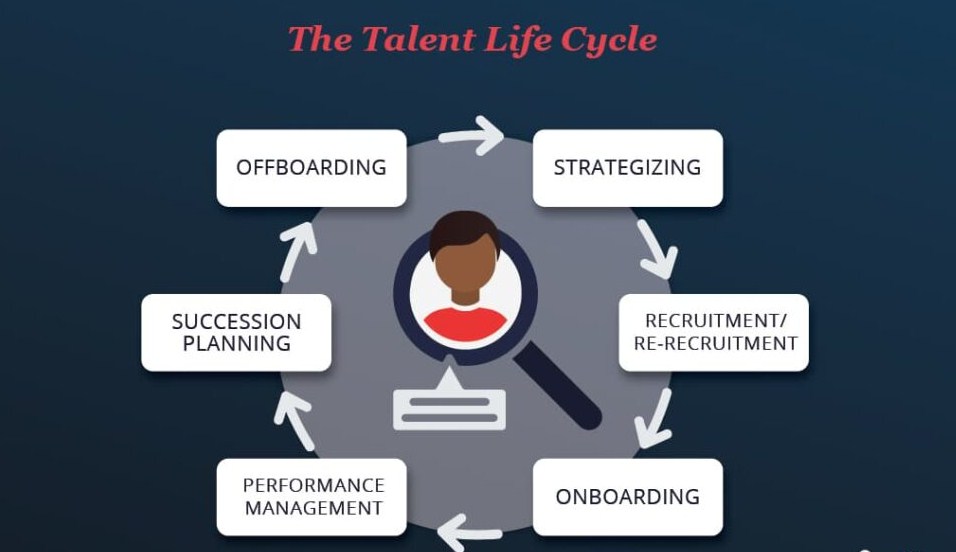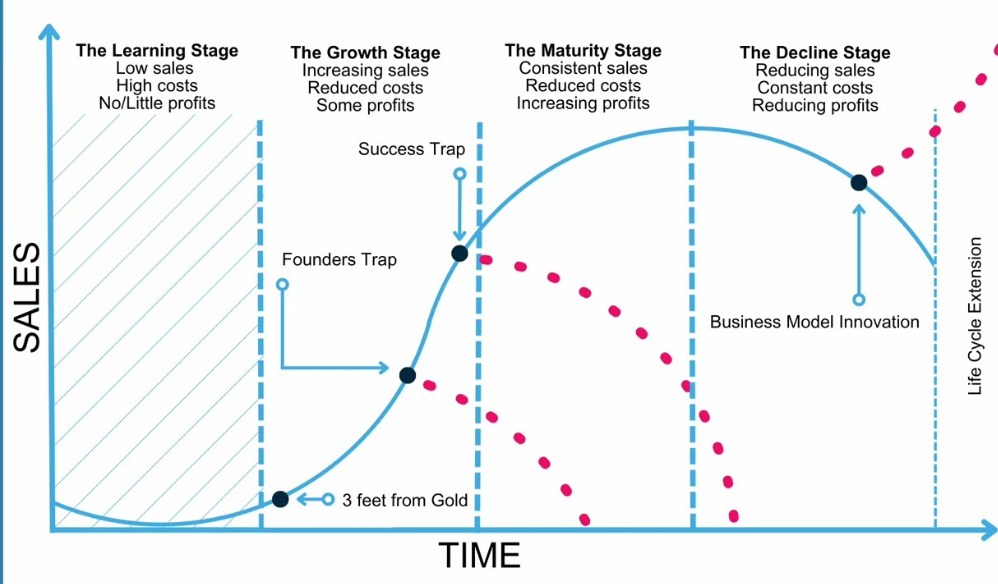Mastering the Business Life Cycle – The business life cycle is one of the most important concepts for understanding how businesses evolve, thrive, or fail. Whether you’re just starting out or looking to scale your existing business, knowing the key stages of the business life cycle and utilizing the right tools can make a significant difference in your success. In this article, we’ll take you through the phases of the business life cycle, the benefits of mastering them, and highlight some of the best tools that can help you optimize your business growth.

What is the Business Life Cycle?
The business life cycle refers to the stages a company goes through as it grows, matures, and eventually declines or exits. Understanding these stages is crucial for any entrepreneur or business leader because it helps them navigate challenges, leverage opportunities, and plan strategically for the future.
The business life cycle typically includes the following key stages:
- Seed Stage 🌱
- Startup Stage 🚀
- Growth Stage 📈
- Maturity Stage 📊
- Decline or Exit Stage 🛑
Key Stages of the Business Life Cycle:
1. Seed Stage
This is the very beginning of the business journey, where the idea is conceptualized, and initial market research is done. At this stage, businesses are more about validating an idea and laying the groundwork.
Key Activities:
- Market research
- Business plan development
- Identifying potential customers
- Securing initial funding
Tools to Consider:
At this stage, tools like Trello (for project management), Google Trends (for market research), and QuickBooks Self-Employed (for managing finances) can help keep things organized and moving forward.
2. Startup Stage
Once the business idea is validated, the company enters the startup stage. This is where products are developed, marketing strategies are tested, and the first sales are made.
Key Activities:
- Product development
- Marketing and promotion
- Customer acquisition
- Initial revenue generation
Tools to Consider:
- Shopify: Ideal for setting up an e-commerce platform
- Mailchimp: Excellent for email marketing campaigns
- Slack: Perfect for team communication and collaboration
3. Growth Stage
In the growth stage, businesses experience an increase in revenue and market share. At this point, the focus shifts to scaling operations, optimizing processes, and increasing customer retention.
Key Activities:
- Expanding the product/service line
- Scaling operations
- Improving customer service
- Entering new markets
Tools to Consider:
- HubSpot: All-in-one CRM for managing customer relationships
- Asana: For team collaboration and project management
- Salesforce: Powerful tool for managing leads and customer data
4. Maturity Stage
During the maturity stage, the business has a well-established market presence. Growth begins to slow down, and the focus shifts to maximizing profitability and maintaining market share.
Key Activities:
- Optimizing costs
- Refining products or services
- Enhancing brand loyalty
- Maintaining market leadership
Tools to Consider:
- Google Analytics: For tracking website and marketing performance
- Zendesk: A tool for providing excellent customer support
- Xero: For managing advanced accounting tasks
5. Decline or Exit Stage
At some point, businesses may face a decline due to market changes, competition, or internal inefficiencies. Alternatively, some businesses choose to exit through acquisition, selling, or mergers.
Key Activities:
- Identifying reasons for decline
- Restructuring or pivoting the business model
- Exploring exit strategies (e.g., selling or merging)
Tools to Consider:
- Tableau: A data visualization tool for understanding key performance metrics
- Gusto: For managing employee compensation and benefits during restructuring
Benefits of Mastering the Business Life Cycle
Understanding and managing each stage of the business life cycle offers several advantages:

1. Proactive Planning
Knowing what to expect at each stage allows business owners to plan proactively, avoiding common pitfalls that come with each phase.
2. Optimized Resource Allocation
By understanding which phase the business is in, leaders can allocate resources more effectively, ensuring that investments and expenditures align with current needs.
3. Improved Decision Making
At each stage, businesses face different challenges. A clear understanding of the life cycle helps decision-makers make informed choices about everything from product development to scaling operations.
Top Tools for Managing the Business Life Cycle : Mastering the Business Life Cycle
While understanding the business life cycle is crucial, having the right tools to manage it effectively can greatly enhance your chances of success. Let’s dive into some of the best tools designed to help businesses at various stages of their life cycle:
1. HubSpot CRM – For Growth and Maturity Stages
HubSpot CRM is an all-in-one solution that helps businesses manage customer relationships, streamline marketing efforts, and increase sales. It’s especially helpful during the growth and maturity stages.
- Features: Lead management, marketing automation, email tracking, customer segmentation
- Pros: Free tier, robust analytics, scalable for businesses of any size
- Cons: Can be complex for new users, expensive at higher tiers
- Price: Free (basic), $50+/month (premium)
- Use Case: HubSpot is great for businesses looking to scale customer acquisition and retention efforts. It helps manage contacts, track sales, and nurture leads in the growth stage.
Learn More
2. Shopify – For Startups and Growth Stages
For businesses focused on e-commerce, Shopify is an excellent platform for launching and scaling your online store. It’s particularly useful in the startup and growth stages when businesses are beginning to scale.
- Features: Website builder, inventory management, payment processing, customer support tools
- Pros: Easy to use, highly customizable, supports multiple payment gateways
- Cons: Can get expensive with advanced features, transaction fees
- Price: Starts at $29/month
- Use Case: Shopify is ideal for businesses looking to build an online store from scratch or expand their existing e-commerce presence.
Learn More
3. QuickBooks – For Seed and Growth Stages
QuickBooks is a powerful accounting software that helps small businesses with financial management. It’s useful during the seed and growth stages, where managing cash flow is critical.
- Features: Expense tracking, invoicing, tax calculations, payroll management
- Pros: Easy to use, integrates with other business tools, cloud-based
- Cons: Higher-tier plans are expensive, some features can be overwhelming for beginners
- Price: Starts at $25/month
- Use Case: QuickBooks is essential for any business owner who needs to stay on top of finances, tax filing, and payroll.
Learn More
4. Salesforce – For Growth and Maturity Stages
Salesforce is a leading CRM solution that helps businesses manage customer relationships and optimize sales processes. It’s invaluable in the growth and maturity stages, where customer acquisition and retention are key.
- Features: Lead tracking, sales forecasting, automation, analytics
- Pros: Customizable, highly scalable, integrates with numerous third-party apps
- Cons: Expensive for small businesses, steep learning curve
- Price: Starts at $25/month per user
- Use Case: Salesforce is ideal for businesses that have a growing sales team and want to streamline the sales process while gaining valuable insights into their customer base.
Learn More
5. Asana – For All Stages of the Life Cycle
Asana is a project management tool that helps businesses stay organized, track progress, and collaborate more effectively. It’s useful in all stages of the business life cycle.
- Features: Task tracking, project timelines, team collaboration, reporting
- Pros: Intuitive user interface, flexible, integrates with other tools
- Cons: Limited functionality in the free plan, requires time to master advanced features
- Price: Free (basic), $10.99+/month (premium)
- Use Case: Asana is great for businesses that need to stay on top of multiple projects, deadlines, and team collaborations.
Learn More
Where to Buy and How to Buy
To buy any of these tools, visit their respective websites and choose the plan that best suits your needs. Most offer free trials, so you can explore their features before committing.
For affiliate links and special discounts, check the official websites or third-party affiliate programs for offers.
FAQ – Your Questions Answered!
1. What is the business life cycle?
The business life cycle is a series of stages that every business goes through from inception to decline or exit. It helps business owners plan and navigate challenges at each stage.
2. Why is understanding the business life cycle important?
Understanding the business life cycle helps entrepreneurs make informed decisions, optimize resources, and plan for long-term success.
3. What tools can help me manage my business life cycle?
Tools like HubSpot CRM, Shopify, QuickBooks, Salesforce, and Asana can help manage different stages of your business life cycle, from startup to growth.
4. How can I scale my business during the growth stage?
Use tools like HubSpot for marketing automation, Shopify for e-commerce, and Salesforce for CRM to streamline processes and increase efficiency.
5. How do I choose the right tool for my business?
Evaluate your business needs at each stage of the life cycle. For example, if you’re in the startup stage, Shopify might be best for e-commerce, while QuickBooks is great for financial management.
By understanding the business life cycle and leveraging the right tools, you’ll be well-equipped to drive your business to new heights!
Read More >>>
- Best RMM PSA Software Solutions for IT Service Management in 2024
- Atera RMM Review: Why It’s a Top Choice for Remote Monitoring & Management (RMM) – Insights from Reddit Users